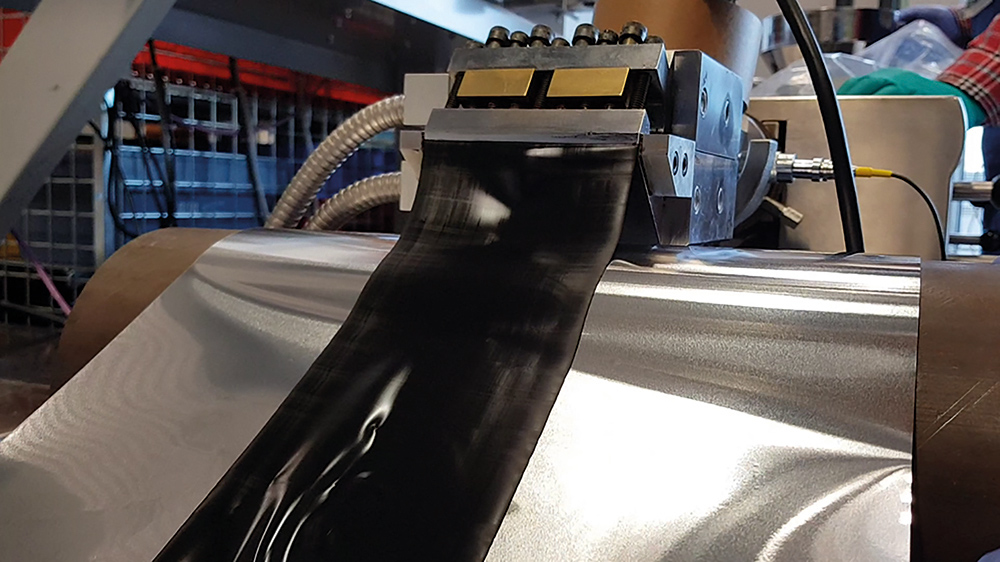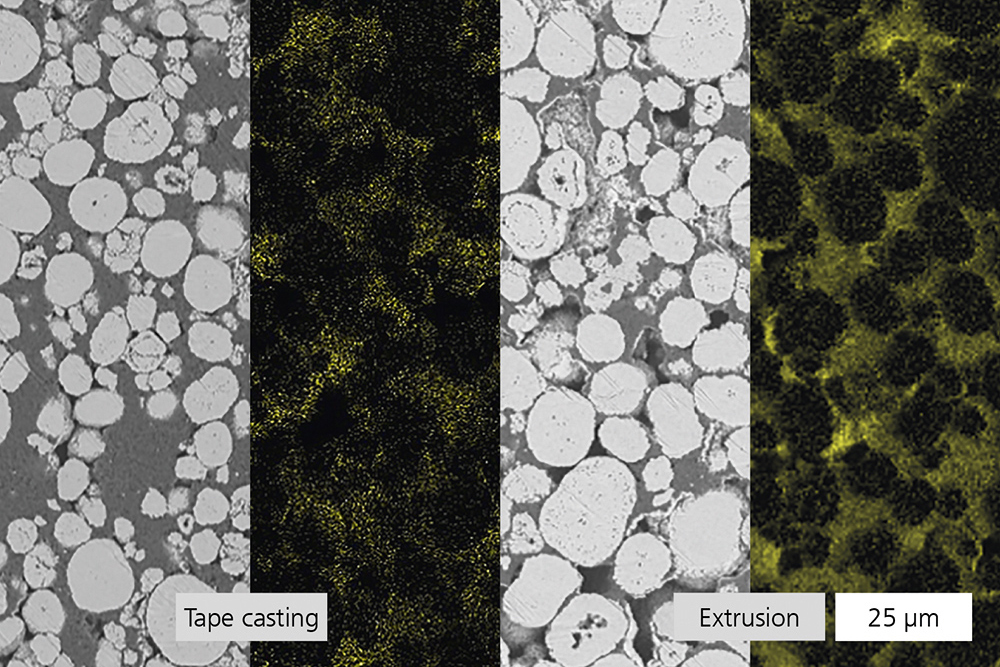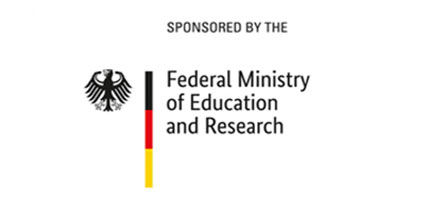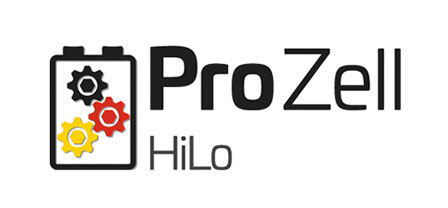

User acceptance of electric vehicles is largely dependent on their driving range, fast-charging capabilities and acquisition costs. These criteria are directly related to energy and power density as well as the production costs of the Li-ion batteries employed. Electrodes with increased active material loading and thicknesses exceeding 100 µm are considered highly promising when it comes to increasing energy density and cost efficiency. However, the conventional casting processes for so-called high-load electrodes are severely limited regarding form stability and homogeneity, as well as their electrochemical performance. To tackle these issues, Fraunhofer IKTS develops innovative coating processes combined with model-based design tools.
Based on computer-aided numerical simulations of the electrode behavior and advanced electrochemical characterization techniques, Fraunhofer IKTS develops and validates applicationoriented design tools, which can be directly implemented into manufacturing processes of Li-ion batteries. Important electrode parameters, such as layer thickness, microstructure and composition, are optimized for maximum energy and power density through the use of model-based processes. Additionally, predefined boundary conditions, such as assembly space or rate capability, are included and applied in practice to the electrode manufacturing process.
For the extrusion-based coating process developed at IKTS, a pre-mixture of active materials, additives and binder solution is dispersed well in a twin-screw extruder under high shear forces. The resulting pastes are extruded via a slot die, laminated onto a current collector tape and dried. By optimizing the geometry of the slot die and the rheological properties of the pastes, a continuous coating process is established (Figure 1). Compared to conventional casting processes, a distinctly higher solid content of up to 85 wt % is achieved. Accordingly, the required amount of solvents is lowered by 80 vol % and the corresponding drying time is significantly reduced. At the current level of development, the process enables manufacturing electrodes with high active material loads and coatings of up to 300 µm. At the same time, disadvantages of conventional casting processes, such as binder migration and adhesion problems for fast drying processes (Figure 2), do not occur in the developed high-viscosity pastes. The proper electrochemical function of the electrodes prepared this way has been successfully demonstrated for NCM-graphite full cells. Besides increased energy density on the cell level, the developed process yields substantial savings regarding materials and energy costs when compared to conventional casting processes. In a next step, the extrusion-based coating technology is transferred to a pilot process in the IKTS Battery Technology Application Center.

